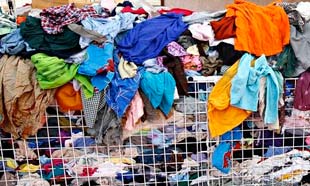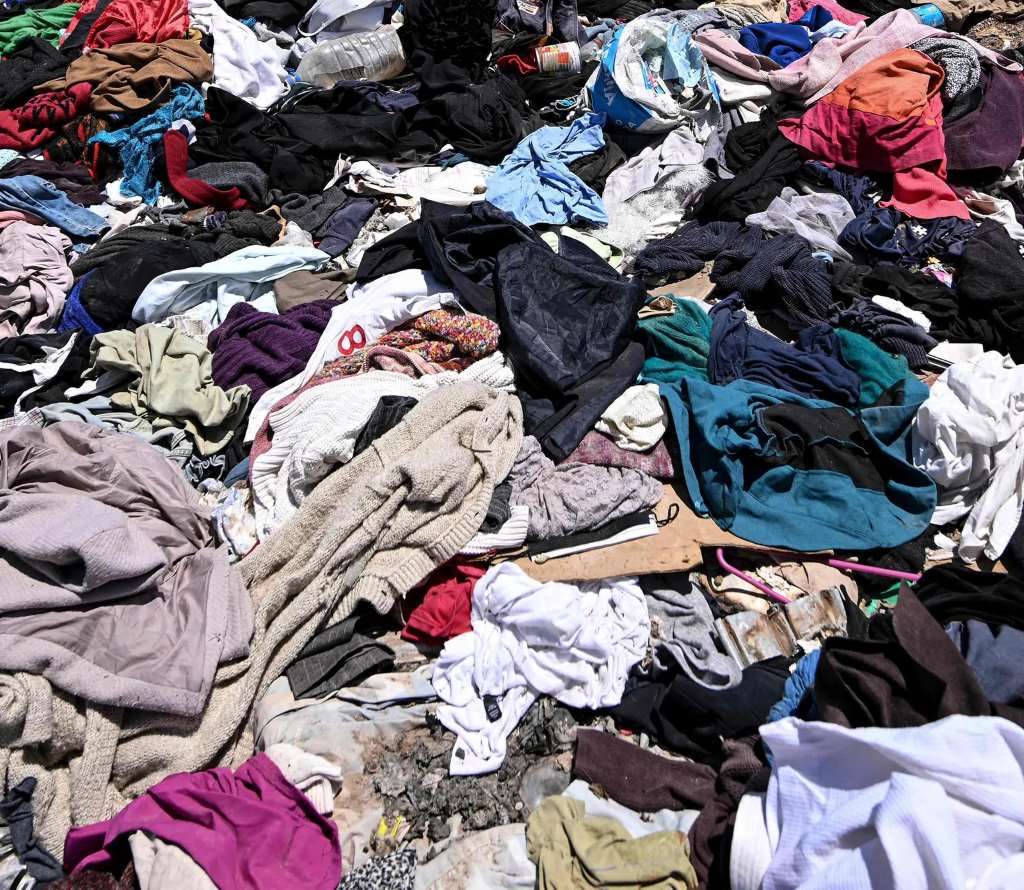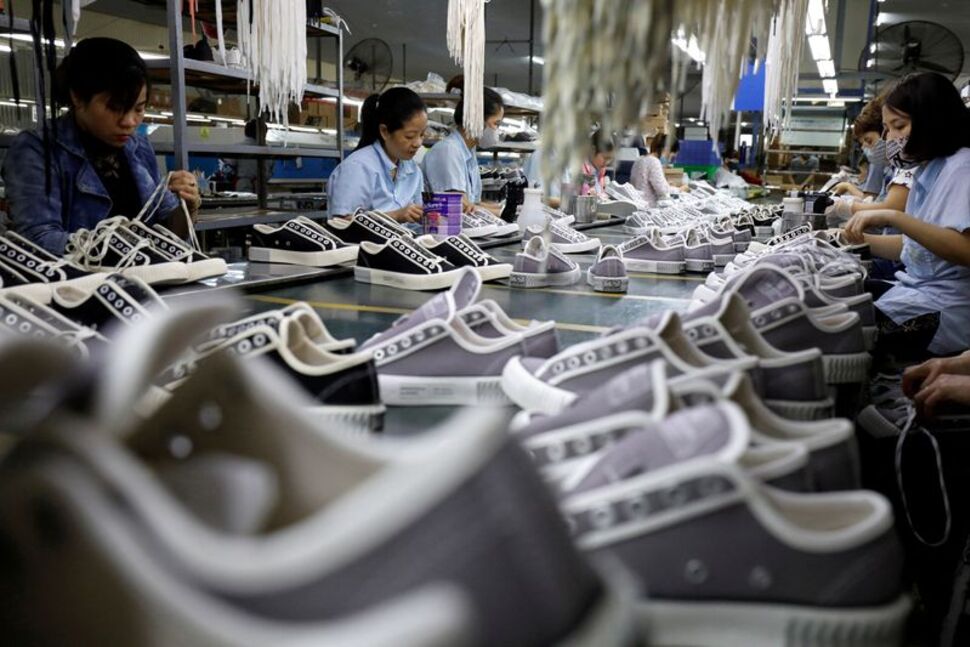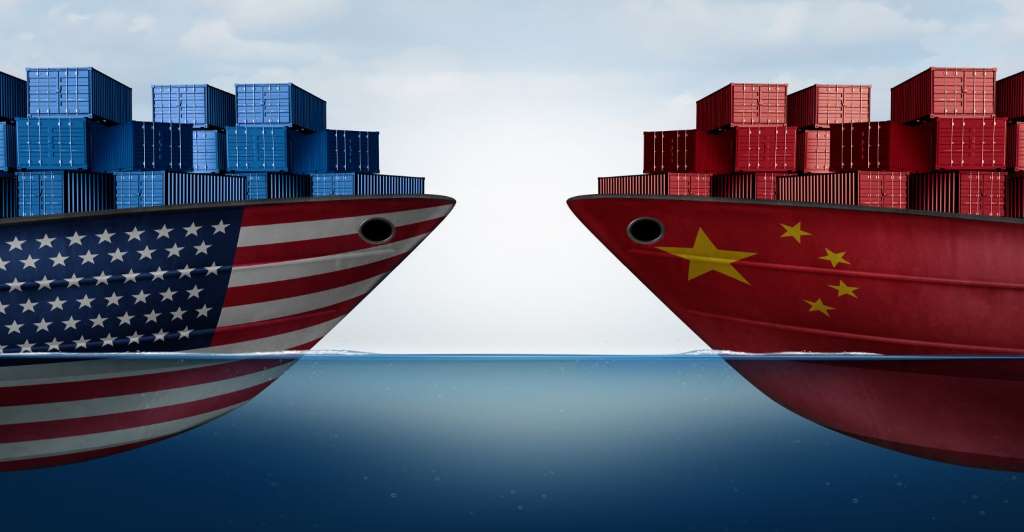FW
 With the third edition of Asia Apparel Expo just around the corner, FashionUnited took the opportunity to ask Ben Wong, marketing manager of organizer Mega Expo (Berlin) Limited a few questions about the show. Asia Apparel Expo will take place from 18th to 20th February in halls 11.1 and 17 at the Messe Berlin exhibition grounds in Berlin.
With the third edition of Asia Apparel Expo just around the corner, FashionUnited took the opportunity to ask Ben Wong, marketing manager of organizer Mega Expo (Berlin) Limited a few questions about the show. Asia Apparel Expo will take place from 18th to 20th February in halls 11.1 and 17 at the Messe Berlin exhibition grounds in Berlin.
As the self-proclaimed “only dedicated all-Asian apparel sourcing event in Europe” Asia Apparel Expo aims to bring garment producers from Asia and European buyers together. Asked about any changes compared to the previous year, Ben Wong states: “For its third edition we feel Asia Apparel Expo is now consolidating its position as the only dedicated business event for Asian-based suppliers. Seventeen companies have returned to exhibit again and have begun to establish new business relationships. We are delighted at the level of participation from Bangladesh with 20 companies supported by the Export Promotion Bureau exhibiting.”
Top Asian sourcing countries represented at Asia Apparel Expo
All in all, 212 experienced suppliers have confirmed their participation for this year’s event. Apart from Bangladesh, six of the world’s largest garment producing countries and regions will be represented with China, Hong Kong, India, Pakistan, Thailand and Vietnam. In view of recent factory incidents in these apparel-producing countries, FashionUnited asked Wong to elaborate on the exhibitor selection process and the verification of their credentials. “Our intention is to select exhibiting companies that have a track record of dealing in volume and export and have already being working with European customers,” explains Wong.
On the buyers’ side, more than 2500 European trade professionals are expected to attend the show. “The pre-registration includes branded manufacturers, private label producers, sourcing agents, designers, wholesalers and chain stores with strong interest from France, Germany, the Netherlands, Spain, Poland and Russia as well as the Middle East and South Africa,” confirms Wong. Other countries sending representatives to Asia Apparel Expo are the UK, Denmark, the Czech Republic, Sweden, Belgium and Portugal.
Last year, visitors from Germany made up 48 percent of all visitors with Poland, Spain, the UK and Italy coming in second, third, fourth and fifth, respectively. “We’re looking for suits and knitwear. We found more quality and cost-competitive suppliers in this show as compared to other garment fairs we visited in Germany. The product quality here is excellent. For sure, we will come again next year,” said Ms. Baumann, purchasing manager at German hotel supplier Hotelwäsche Erwin Müller GmbH & Co. KG.
Other European visitors have specific demands they are looking to fulfil. “As a trading company in Poland, we have come to look for pyjamas. We are glad to see some high-quality suppliers from China and other Asian countries. We’d love to visit the show again next year,” agreed Mr. Joñczyk of Febe Trade Sp. z o.o.
To make sure that visitors easily find what they are looking for, the trade expo has been divided into the following five areas: mens- and womenswear, childrenswear, fabrics, textiles and trimmings and accessories. The mens- and womenswear segement includes denims, sportswear, downs and casualwear; fabrics showcases functional and novelty fabrics apart from basic ones, and textiles includes eco textiles and nonwovens. Asia Apparel Expo is open daily for trade visitors from 9:30 am to 4:30 pm (4 pm on the last day of the show).
 It has long been known that the fashion and clothing sectors generate much waste, however new figures highlight consumers are just as wasteful. WRAP, the Waste Resources Action Programme, has revealed UK consumers have over 30 billion pounds worth of clothing in their wardrobes that haven't been worn for over a year. Over 91 million pounds worth of clothing is discarded after just one wear and over 140 million pounds of clothing and shoes are thrown into landfills each year, rather than being recycled.
It has long been known that the fashion and clothing sectors generate much waste, however new figures highlight consumers are just as wasteful. WRAP, the Waste Resources Action Programme, has revealed UK consumers have over 30 billion pounds worth of clothing in their wardrobes that haven't been worn for over a year. Over 91 million pounds worth of clothing is discarded after just one wear and over 140 million pounds of clothing and shoes are thrown into landfills each year, rather than being recycled.
Clothing sector must reduce carbon, water and waste
These atrocious figures have led to SCAP, the Sustainable Clothing Action Plan, to commit to a reduction in waste by the year 2020. The targets included a 15 percent reduction in carbon, water and in waste to landfill, plus a 3.5 percent reduction in waste arising, per tonne of clothing by 2020.
Retailers including Tesco, M&S, Next and Stella McCartney are among 53 retailers and suppliers in the clothing sector who have committed to reduce the environmental impacts of clothing across its lifecycle.
The average person in the UK buys 27 clothing items per year with average household spending 1,700 pounds per year on clothing.
The SCAP Footprint Calculator has been introduced to help a retailer or brand to calculate the carbon, water and waste footprints of its whole garment portfolio. In addition it helps recyclers and collectors measure the carbon, water and waste impact for their processes and impact of changing waste destinations.
The tool will help organizations prioritise their opportunities to take action, and an online Knowledge Hub will help signatories product development teams identify how they can reduce the footprint of individual garments they design and source.
In addition SCAP has launched a Love Your Clothes initiative, which helps consumers to make their clothes last longer, reduce the environmental impact of laundering clothes, deal with unwanted clothes, and most importantly make the most of your wardrobe.
The 18th edition of Milano Unica, the Italian Textiles Trade Show, showcasing S/S 2015 textile collections raked in good business. There were 398 exhibitors, of which 72 were from European countries.
Opines Silvio Albini, President of Milano Unica says, “The positive signs that our businesses are currently registering, have been confirmed by the quality of buyers.” Along with the total number of visitors (approximately 19,000), the Italian textiles trade show recorded a significant increase of over 7.6 per cent in the number of foreign businesses who visited during the three-day exhibition. It was dedicated to the promotion of the excellence of Italian and European fabrics.
At the inauguration ceremony Carlo Calenda, Deputy Minister, Italian Ministry of Economic Development reflected on issues and opportunities existing in the market while highlighting the contribution of Italian fabrics to the success of expo 2015.
Countries like Germany (over 30%), Spain (over 16%), United Kingdom (over 16% and Sweden (over 45%) significantly increased their participation both in percentage and absolute terms. China, Russian Federation, Turkey and Japan, too saw a significant rise in participation this time.
Albini points out that the quality of visitors too were good. “The higher number of buyers coming from our traditional foreign markets definitely represents an important sign leading us to look at the future with moderate optimism for our manufacturing industry,” adds Albini.
The 5th edition of Milano Unica China will be held from March 3-5, 2014 in Shanghai. And the edition showcasing the F/W 2015-2016 collections will be held from September 9-11, 2014 at Portello di Fieramilano city.
www.milanounica.it
 SDC (Society of Dyers and Colourists) is the worlds leading independent, educational charity dedicated to advancing the science and technology of colour. On their recent visit to India SDC s CEO, Graham Clayton and President, Richard Straughan spoke to Relin Hedly about sustainability and technological evolution in sustainability
SDC (Society of Dyers and Colourists) is the worlds leading independent, educational charity dedicated to advancing the science and technology of colour. On their recent visit to India SDC s CEO, Graham Clayton and President, Richard Straughan spoke to Relin Hedly about sustainability and technological evolution in sustainability
What is the process of sustainability?
GC: The supply chain of sustainability is a complex process. People think that natural is best. In terms of sustainability and impact on environment, natural may not necessarily be the best. If it fades, then it does not have a long life. Its complex but I think people are moving in the right direction and more conversations are happening across the entire supply chain. The discussion is stretching back to the manufacturing stage.
What has been the evolution of technology in sustainability?
RS: There is a lot of evolution taking place on the dyestuff side like wash up performance of reactive dyes etc, which is making dyestuff expensive. There is a cost factor against performance. However, things are changing and retailers can drive technology and sustainability. Further there are many areas that can be focused on the retail and manufacturing side apart from environment problems that needs to be dealt with.
GC: I came across a unique microwave technology where the entire clothing is put on a conveyor belt and gets disassembled once it’s out. This clothing can be easily sorted, graded and there is lot to be done in terms of fabrics, extraction of dyes, there is still some work to be done. This shows that the technical developments are moving in the right direction.
Is sustainability an efficient way of making money?
GC: If you look at the whole supply chain it is an efficient way of making money but certain parts of the supply chain may end up paying more. There are standards involved and when you put standards in place there is improvement in quality, which helps in reduction of waste. In short, putting in standards saves money. So you have to see what the effect of the standard is on your production and not just the cost.
RS: If you have good design and quality the lifecycle of the garment is longer. The most important cost benefit is for the next generation. We have to educate and set an example for them.
What are the different challenges that India needs to overcome?
RS: In India, we have to encourage people to come back into the industry. The industry does not have a good reputation of keeping young people because there are cleaner jobs. For example, pharmaceutical has a much cleaner environment, we have to improve the environment for young people to come through and also train them better. If we get the right calibre of people, then we can do more research not only in dyestuff manufacturing but also in processing because these people are the future. India is not the only country, Europe is also facing similar issues. We have to address them and that’s what the SDC is all about: ‘Education’. It is not difficult to persuade Indians that they need training, the issue is what training they need. The best training is a two way communication. Training is not something that needs to be seen as a problem but as an opportunity to move forward. What we have seen is that people are going more into the fashion side but not many are going into the colouration side. They are not training them well and that’s one of the things that need to be addressed.
There is a shift in manufacturing from the West to East? Comment.
RS: There are opportunities for east and west to meet. You have manufacturing in the east with partners in the west. This kind of co-operation will benefit both the parties. We will never get the volumes back because it’s still a cost performance from the east. But east and west working together can actually have that bounce. If we want a new design or a change in colour that can be done in Europe but volume production will come from the east because of cost performance but there will be more cooperation in technology transfer.
Tell us about SDC’s initiatives
GC: SDC was in India for the International Design Competition final. These competitions have helped students to raise their standards. The society also works with school children in UK and helps them understand colour at a very young age.
RS: We appreciate the support received from two fashion institutes in India, BD Somani and Nirmala Niketan. The fashion houses we visited have given the students a new outlook.
 India needs to focus on improving its wool production both in terms of quantity and quality. The country ends up importing huge quantities of wool simply because the domestic wool being produced does not match up to the quality. This was pointed out by S K Chaudhari in his paper, ‘Wool Sector: Indian and Global Perspective’. He says, certain issues and concerns have direct bearing in the growth and development of the Indian wool textile industry. Inadequate quantity of domestic wool is making India perpetually dependent on imported wool for apparel as well as non-apparel textiles. Inadequate quality of domestic wool, use of outdated processing technology, virtually nil grading mechanism, long chain of intermediaries, current import duty structure does not give a level playing field in the international market. To add to it is the problem of inadequate database, inadequate image building activities especially in the international market etc.
India needs to focus on improving its wool production both in terms of quantity and quality. The country ends up importing huge quantities of wool simply because the domestic wool being produced does not match up to the quality. This was pointed out by S K Chaudhari in his paper, ‘Wool Sector: Indian and Global Perspective’. He says, certain issues and concerns have direct bearing in the growth and development of the Indian wool textile industry. Inadequate quantity of domestic wool is making India perpetually dependent on imported wool for apparel as well as non-apparel textiles. Inadequate quality of domestic wool, use of outdated processing technology, virtually nil grading mechanism, long chain of intermediaries, current import duty structure does not give a level playing field in the international market. To add to it is the problem of inadequate database, inadequate image building activities especially in the international market etc.
It may be noted that India’s raw wool consumption is expected to double from 112 million kg to nearly 260 million kg by 2019-20. It is estimated that the domestic production of raw wool will increase to 54.1 million kg by 2019-20 from 46.4 million kg as of now.
Chaudhuri says the wool and woollen textile industry in India constitutes organized, decentralized and rural sectors. And even though India is among the seventh largest producer of wool and contributes about 1.8 per cent to the total world wool production. It has to depend on imports to meet demand. The country mainly produces coarse wool that can be used in floor covering products. It is dependent primarily on import of finer quality wool for making apparels.
India imports finer quality raw wool from Australia for the apparel industry as it is not available in the country. The country also imports sizable quantity of other assorted wool to blend with New Zealand and Indian wools to make carpet yarns of better quality and competitive price. New Zealand wool is mainly used for handmade carpets industry, which is used in combination with the local wools to optimize the cost and quality.
Wools import are primarily from Australia, New Zealand and other miscellaneous countries. Australia, China and New Zealand are the world’s leading producers of wool. Chaudhury says, “The installed capacity of the industry in top making is about 34 million kg, 6.04 lakh worsted spindles, 4.37 lakh non- worsted spindles, 7, 228 power looms, 0.5 million of machine made carpets and about 9 million sq. metre of handmade carpet.”
The paper reveals, “There are about 960 woollen units in the country out of which majority of them are in small scale sector.” Wool fibre accounts for only about 1.6 per cent (2008) in world fibre production. The total wool consumption in India in the year 2008-09 was about 112 million kg out of which the import component was around 65.6 million kg. Within India, Rajasthan, Gujarat and Karnataka are main wool producing states. Around 85 per cent of the total domestic wool production is carpet grade, 10 per cent is coarse grade which is unfit to use and about 5 per cent suitable for apparel grade.
One main reason for Indian wools being of inferior quality is the unavailability of suitable pasture lands. The pastures are of low grade making the ultimate quality of fibre inferior. The yield per sheep in India is only 700-800 gm per year, which is abnormally low compared with merino sheep in Australia which gives nearly 5 kg per sheep per year. The dire poverty of Indian sheep breeders compels them to shear a sheep 2-3 times a year, which results in low yield and shorter fibre length.
Textile and apparel imports by the US been rising of late. The country is showing signs of improvement and higher consumer spending. Compared with 2012, when textile and apparel imports edged up just 0.7 per cent, the volume of imports into the US climbed 4.6 per cent last year.
China dominates with highest market share of imports. Its share grew last year to 48 per cent of the total imports, up from 47.4 per cent the year earlier. China also remains the largest apparel supplier to the US, with its shipments rising 4.9 per cent in 2013.
Vietnam is the second largest apparel supplier to the US. Vietnam has been gaining as both producers and buyers diversify their supply chains by moving some manufacturing from China. The country is also being buoyed by the prospect of the Trans-Pacific Partnership (TPP) trade treaty with countries like Canada and the US. Coming third is Bangladesh.
Six other top 10 apparel suppliers to the US have also gained including: Indonesia, Cambodia, Mexico, India, El Salvador and Pakistan. India has benefited from orders diverted from China and Bangladesh as well as the recovering American economy.
Italy-based Itema a provider of advanced weaving solutions, including best-in-class weaving machines, spare parts and integrated services, has seen its revenue go up by 25 per cent year on year. Consolidated net profit and cash flow from operations significantly exceeded expectations, with EBT up 30 per cent year on year. Consolidated net turnover from sales of weaving machines registered a 50 per cent increase from the previous year.
Itema, widened its global reach by shipping its weaving machines to 40 countries last year (compared to 39 countries in 2012). Especially remarkable contribution came from the new rapier R9500 which, at just one year from market launch, represented already one-third of the total turnover from weaving machines.
The spare parts business unit was recently restructured to devise and implement a new strategy, which has already started bringing in encouraging results. In 2013, the company implemented a wide range of restructuring and process improvement measures, such as continuing on the path of lean manufacturing across its production facilities, increasing the ability of the company to quickly respond to growing market demands for its products.
Itema started the first quarter of 2014 on a positive note and in line with the strong growth experienced in the same period last year. Nevertheless, the outlook for the rest of 2014 remains cautious.
www.itemagroup.com/
The US textile industry is reviving, especially knitting and hosiery. The industry generated 54 billion dollars (over Rs 3,00,000 crores) in shipments in 2012 and employed about 2,33,000 people. Business is on the upswing as southern states, in particular, are wooing textile companies with tax breaks, reliable utilities, modern ports and airports and a dependable, trained and nonunion workforce. After years of buying fabric from factories in Asia, some American brands have begun sourcing materials from textile companies in the United States.
The US textile industry is one of the more important employers in the manufacturing sector. It represents two per cent of the US manufacturing workforce. Textile industry workers in the US are highly skilled and the industry is technologically advanced, with investments upward of 1.4 billion dollars (over Rs 8,000 crores) annually in total capital expenditures. In recent years, US textile companies have focused on retooling their businesses, finding more effective work processes, investing in niche products and markets, and controlling costs.
The industry is globally competitive, ranking third in global export value behind the European Union and China. US exports of textiles increased by 14 per cent between 2010 and 2011. More than 80 per cent of US textile exports go to its free trade agreement partner countries.
The Dhaka International Textile and Garment Machinery Exhibition (DTG 2014) has opened its doors today and will last till February 15, 2014. This is the largest gathering for textile and garment manufacturers in Bangladesh.
The event offers an ideal platform to demonstrate new products and technologies, as well as networking opportunities with manufacturers, traders and buyers. DTG also helps in bringing in foreign investment and provides a diverse and driving force to production and economic growth of Bangladesh. The event has become a hub for the textile and garment related industries in South Asia every year.
At the last event, nearly 850 exhibitors participated with 1,050 booths showcasing state of the art machinery and technologies. It attracted more than 30,830 international and local visitors. The participating countries included Australia, China, Hong Kong, India, Pakistan, Sri Lanka, Turkey, UK and USA. The categories of exhibits included spinning, weaving, knitting, dyeing, printing, finishing, sewing, iron & hanger system, CAD/CAM, testing and other related machinery, equipments and spare parts.
www.bangla-expo.com/DTG/
Freudenberg Nonwovens, one of the world’s largest producers of nonwovens, with 21 manufacturing and processing sites in 13 countries has spread its wings to Brazil. It is one of the group’s strategic growth markets Freudenberg is looking at gaining market share there. The company is commissioning a new manufacturing plant for Technical Products and Hygiene market segments, underlining the significance of the South American region.
The move will pave the way to harness further opportunities to increase profitability in the niche hygiene market segment and enhance sales. Also it will help in expanding the product portfolio with special solutions, such as printed or especially light, cotton like nonwovens. Freudenberg hopes to manufacture even better specialist hygiene products in the future by using tried and tested nonwovens technology.
The Freudenberg group is expanding its commitment to the automotive industry by commissioning a new production line for thermoplastic high performance components in Diadema.
Following the US, China and Japan, Brazil forms one of the largest automotive markets in the world. Experts expect an increase in vehicle production by 12 per cent to 3.8 million manufactured vehicles in 2014. Over the last few weeks, several automotive manufacturers have announced their intention to build new assembly plants there, and to serve the higher demand.
www.freudenberg.com/












